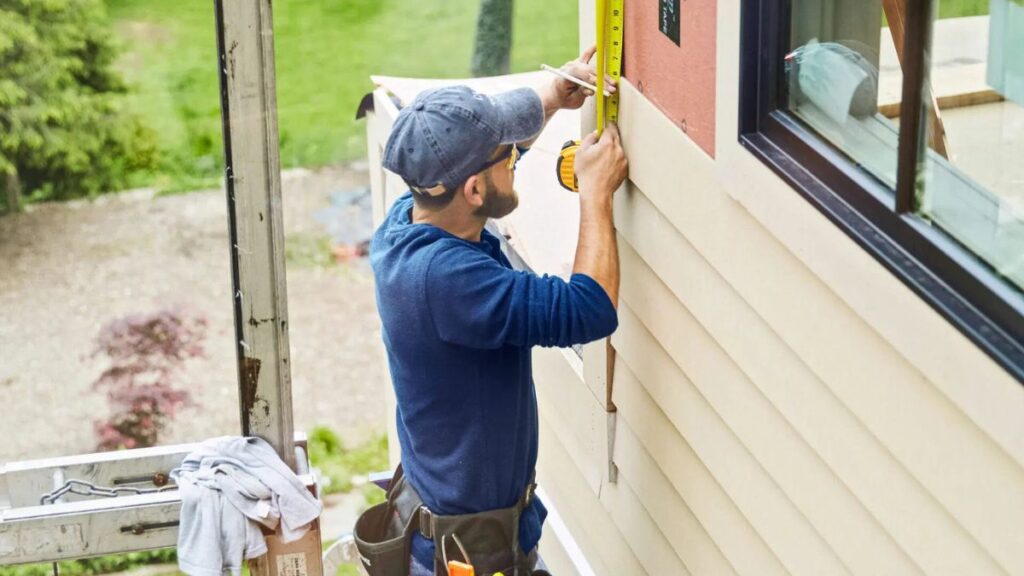Wood siding has long been a favored choice for homeowners seeking a natural, warm, and timeless exterior for their property. Its classic appeal and versatility make wood siding a popular option, blending aesthetic charm with practical benefits. However, to fully enjoy wood siding’s advantages, understanding the types, installation methods, maintenance, and potential challenges is essential.
In this article, we’ll explore everything you need to know about wood siding—from material options to installation techniques, maintenance tips, and why it remains a top choice for exterior cladding.
What is Wood Siding?
Wood siding refers to the application of wooden boards or panels on the exterior walls of a building. It acts as a protective layer against weather elements while providing a distinctive look. Wood siding can come in various styles, including clapboard, shingles, shakes, board-and-batten, and tongue-and-groove panels.
Its natural texture and warmth create a unique character for homes, often making properties stand out with charm and elegance.
Types of Wood Siding
There are several popular types of wood siding, each offering distinct aesthetics and performance:
- Clapboard (Lap Siding): Long, narrow boards installed horizontally with overlapping edges, creating a classic look.
- Shingles: Thin, tapered pieces of wood laid in overlapping rows, adding texture and rustic appeal.
- Shakes: Similar to shingles but thicker and hand-split, offering a more rugged, natural appearance.
- Board-and-Batten: Vertical wide boards with narrow battens covering seams, providing a bold, structured style.
- Tongue-and-Groove: Boards with interlocking edges, allowing for a smooth, seamless finish.
Choosing the right type depends on architectural style, budget, and desired appearance.
Advantages of Wood Siding
Wood siding offers several benefits that make it an attractive option:
- Aesthetic Appeal: The natural grain and warmth of wood create timeless beauty.
- Versatility: Wood can be painted, stained, or left natural to suit various styles.
- Durability: With proper care, wood siding can last for decades.
- Insulation: Wood provides good thermal insulation, improving energy efficiency.
- Eco-Friendly: Wood is a renewable resource, especially when sourced sustainably.
- Ease of Repair: Damaged sections can be replaced without redoing entire walls.
These advantages contribute to wood siding’s continued popularity.
Wood Siding Installation Process
Proper installation is crucial to maximize wood siding’s lifespan and performance. Here’s an overview of the typical installation process:
1. Preparation
- Inspect and repair the existing exterior sheathing.
- Install a weather-resistant barrier (house wrap) to protect against moisture infiltration.
- Ensure proper flashing around windows, doors, and rooflines.
2. Measuring and Cutting
- Measure siding boards according to wall dimensions.
- Cut boards precisely to fit around windows, doors, and corners.
3. Installing the Siding
- Start at the bottom of the wall and work upwards.
- For clapboard or lap siding, overlap boards horizontally to shed water.
- Use corrosion-resistant nails, driving them through the thickest part of the board into the studs.
- Leave a small gap for wood expansion and contraction.
- For shingles or shakes, stagger rows to create a textured look.
- For board-and-batten, install wide boards first, then battens over the seams.
4. Finishing Touches
- Apply paint, stain, or sealant to protect the wood from moisture and UV damage.
- Install trim around windows, doors, and corners for a polished look.
Maintenance and Care for Wood Siding
Wood siding requires regular maintenance to preserve its appearance and protect it from the elements:
- Inspect annually: Look for cracks, rot, insect damage, or loose boards.
- Clean regularly: Use a soft brush or pressure washer on a gentle setting to remove dirt and mildew.
- Repaint or restain every 3-7 years: Depending on climate and product used, refinishing prevents moisture penetration.
- Seal gaps and cracks: Use caulk to seal openings that may allow water intrusion.
- Address damage promptly: Replace rotten or damaged boards to prevent spread.
Consistent maintenance ensures wood siding remains durable and visually appealing.
Challenges of Wood Siding
Despite its benefits, wood siding has some potential downsides:
- Susceptible to moisture: Without proper sealing, wood can absorb water leading to rot or warping.
- Requires regular upkeep: Paint or stain needs to be refreshed periodically.
- Vulnerable to insects: Termites and carpenter ants may attack untreated wood.
- Flammability: Wood siding is combustible and may not be suitable in fire-prone areas without treatment.
- Cost: Wood siding can be more expensive than vinyl or fiber cement alternatives.
Understanding these challenges helps homeowners plan for proper installation and maintenance.
Tips for Maximizing Wood Siding Longevity
- Choose high-quality, durable wood species such as cedar, redwood, or cypress.
- Use proper flashing and weather barriers during installation.
- Apply high-quality stains or paints with UV protection.
- Ensure good ventilation behind siding to reduce moisture buildup.
- Schedule regular inspections and maintenance to catch issues early.
With these precautions, wood siding can remain beautiful and functional for decades.
Environmental Considerations
Wood siding is an environmentally friendly choice when sourced from sustainably managed forests. It is biodegradable and has a smaller carbon footprint compared to synthetic materials. Some wood siding options come from reclaimed or recycled wood, further reducing environmental impact.
Choosing low-VOC paints and stains also contributes to healthier indoor and outdoor air quality.
Final Thoughts
Wood siding continues to be a favorite exterior option due to its natural beauty, versatility, and durability. While it requires more maintenance than some modern alternatives, the unique character and warmth it brings to a property are unmatched.
When properly installed and cared for, wood siding can protect your home from the elements while enhancing its curb appeal for years to come. If you’re considering upgrading your home’s exterior, investing in quality wood siding is a decision that combines aesthetics with functionality.
For those looking to transform their property, expert installation and ongoing maintenance are key to enjoying the full benefits of wood siding in any season.







